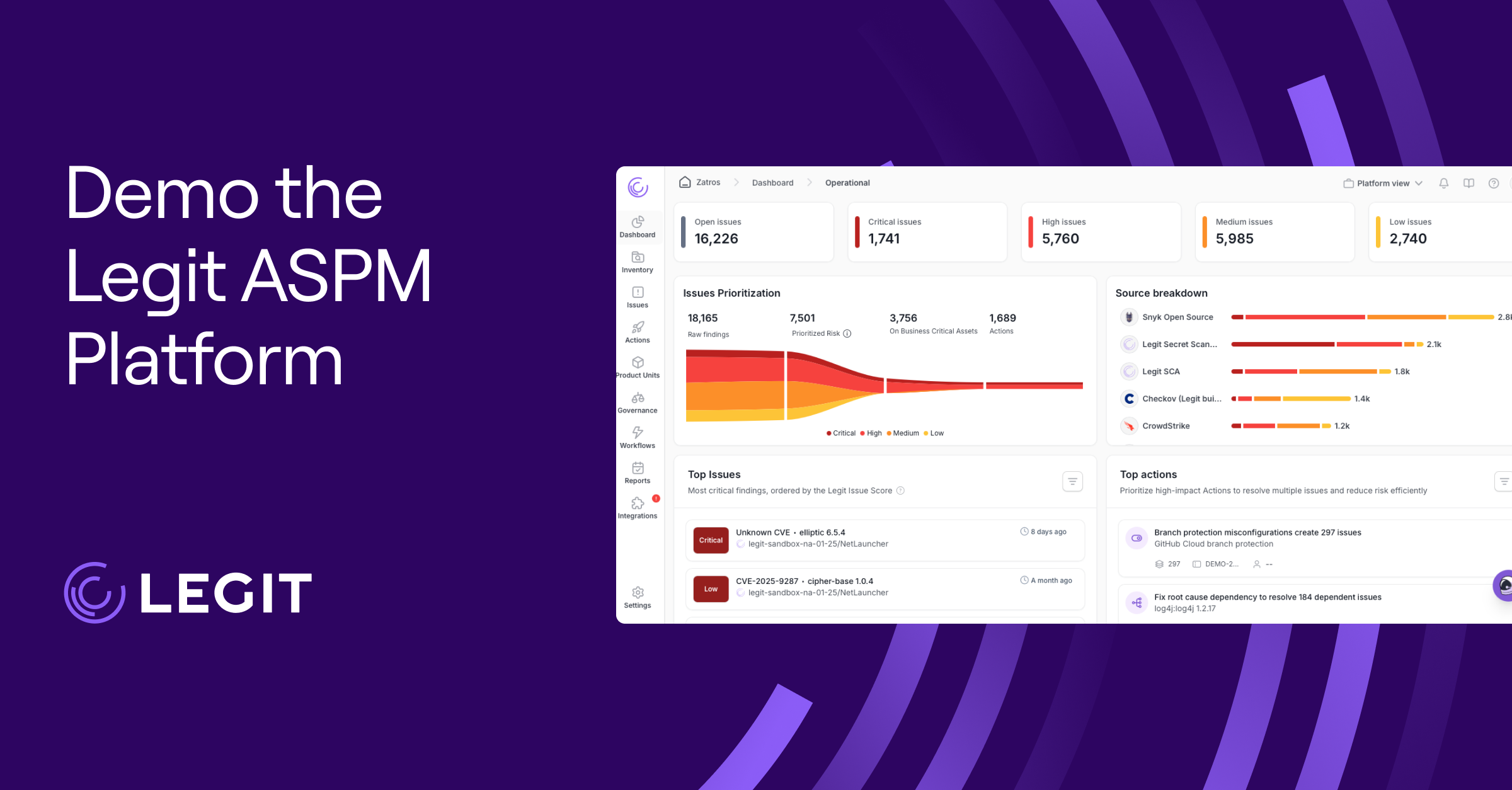For any organization – especially those in regulated industries – passing a compliance audit doesn’t guarantee protection against attacks. What matters is concrete evidence that applications are bulletproof. That comes from practices that reveal vulnerabilities in the software development lifecycle (SDLC) before they hit production.
But applications can fail in many ways, and no single test can detect every flaw. That’s why teams rely on a mix of security testing methodologies.
In this guide, we’ll explore six of the most common ways to strengthen application security and the tools teams use to put their defenses to the test.
Security Testing Explained
Security testing works on two levels to identify vulnerabilities in your software, from web applications to the infrastructure and developer environments that support them.
At the first level, security teams and testers evaluate the application itself to uncover weak spots that attackers could exploit or that might result in damaging leaks. This often involves code scanning and related checks.
The second level involves penetration testing of application security controls to audit how well they stand up to potential attackers. For example, is there a way to get around MFA during login? Could a VPN bypass access controls that block certain locations?
Effective teams blend automated testing tools with manual reviews to validate security controls and verify fixes, an approach that continually strengthens the organization’s security posture over time.
6 Security Testing Methodologies
Cybercrime evolves so rapidly that it’s easy for security teams to miss key vulnerabilities or overlook new threats. To keep up, they implement cybersecurity methodologies based on proven best practices. Not every method applies to every environment, and you may find some more useful than others when shaping your application security checklist.
1. Vulnerability Scanning
AI-powered automated testing tools conduct regular vulnerability assessments that catch red flags your team might otherwise miss. But automation isn’t foolproof, which is why teams still need to conduct manual reviews to confirm results and spot risks these tools may overlook.
2. Penetration Testing
In penetration testing, also known as red teaming, ethical hackers simulate real-world attacks to demonstrate the potential impact of any vulnerabilities they discover. Your in-house app testers might already perform penetration tests during their reviews, but outsourcing to a dedicated red team takes it a step further. Red teams bring specialized exploitation skills that can expose serious flaws such as SQL injection or issues from OWASP Top 10, which are especially common in web applications.
Providers like Packetlabs provide penetration testing across infrastructure, cloud, and application environments, giving you an external team focused on uncovering and validating attack paths before attackers find them.
3. Password Cracking
Automated tools now make it easier than ever to crack passwords and compromise your organization’s security posture. One study found that AI-powered tools can break some eight-character passwords instantly. The weakest passwords rely only on numbers, while stronger ones include nine or more characters with mixed letter casing as well as numbers and symbols.
Some organizations are moving away from passwords altogether, adopting passkeys and single-sign on (SSO) to improve their security posture.
4. Configuration Review
Configuration reviews focus on infrastructure settings such as firewalls, but even the most advanced security testing tools can’t provide protection if you have misconfigurations. A thorough risk assessment process should include checks for default passwords, which are often overlooked but highly exploitable. For example, researchers once gained access to McDonald’s AI hiring tool simply by using “admin” and the default “123456” password – a reminder that small oversights can lead to major security vulnerabilities.
5. Fuzz Security Testing
Fuzz testing evaluates how software and APIs respond to unexpected or malformed input. It involves bombarding software with random, invalid, or unpredictable data to observe how it reacts. This security assessment methodology not only reveals hidden vulnerabilities but also highlights weak error handling. It’s an opportunity to confirm that error messages don’t leak sensitive details, such as source code or proprietary information, that could aid attackers.
6. Social Engineering Testing
Beyond the software itself, it’s also important to audit the people in your organization. Even the most secure software, systems, and configurations can suffer breaches if attackers compromise your team. Attackers now use tools like large language models (LLMs), deepfake technology, and other social engineering methods to create highly convincing scams. Running controlled simulations gives you a safe way to test employee responses. It allows you to gauge their resilience against evolving threats and retrain if necessary.
Common Security Testing Tools
Different security testing types require different tools – below are the most popular that organizations use today.
Static Application Security Testing (SAST) Tools
SAST tools review source code or bytecode to detect vulnerabilities before execution. As a white-box testing type, SAST provides early, developer-centric feedback and can flag risks such as SQL injection or coding errors.
Dynamic Application Security Testing (DAST) Tools
DAST tests how your system responds to simulated attacks in runtime. Unlike SAST, which analyzes code before execution, DAST uncovers issues that only appear in live environments, a critical step in assessing real-world security posture.
Interactive Application Security Testing (IAST) Tools
IAST tools combine elements of SAST and DAST for a hybrid approach that delivers more accurate results with fewer false positives. It also provides more detailed insights, such as pinpointing the source code location of flaws.
Software Composition Analysis (SCA) Tools
SCA tools scan open source and third-party components to identify vulnerabilities in external libraries. Most applications depend heavily on open-source code, so when it comes to protecting against inherited risks, SCA is a must.
Runtime Application Self-Protection (RASP) Tools
RASP tools do more than look for suspicious behavior. They complement SAST and DAST, helping block attackers in real time, while also generating data that security teams can use for threat modeling and ongoing risk assessment.
Legit Is Your Ally for Enhancing Security Testing
To protect your system at every layer, you need a multi-layered strategy that covers applications, developers, and infrastructure from code to cloud. Legit’s Application Security Posture Management (ASPM) platform does just that.
With SAST, you can analyze both developer-written and AI-generated code early in the process to catch flaws before they turn into bigger problems. That kind of early detection is one of the most reliable ways to build secure software, whether you use one security test methodology or several.
Legit also unites all your testing efforts by automating checks across the SDLC and filtering results down to the findings that matter most. The outcome is less noise and a clearer path to stronger application security.
Book a demo today to see how Legit supports your approach to security testing.
Download our new whitepaper.


